Chinese New Year foods hold deep cultural significance, symbolizing prosperity, happiness, and good fortune for the coming year. From steaming dumplings filled with savory delights to sweet delicacies like sticky rice cakes, each dish carries traditions passed down through generations. The iconic reunion dinner features a feast of symbolic dishes, such as whole fish for abundance and longevity, and spring rolls for wealth and prosperity. Tangerines and oranges symbolize luck and wealth, while noodles represent longevity. With each bite, Chinese New Year foods not only tantalize the taste buds but also carry the warmth of family gatherings and cherished customs.
Jiaozi
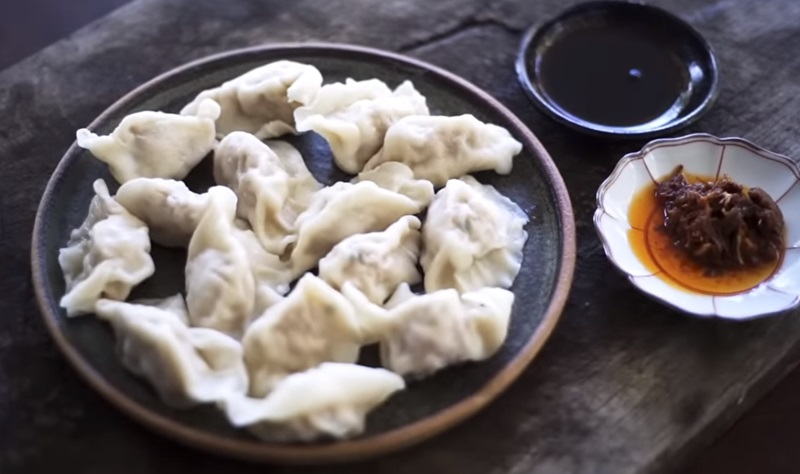
Jiaozi is a traditional Chinese dish that holds immense significance during Chinese New Year celebrations. These dumplings are a symbol of good luck and prosperity for the coming year. Made from a thin dough wrapper, Jiaozi is filled with a variety of ingredients such as minced meat, vegetables, and seasonings. Preparing Jiaozi is a communal activity, where families gather together to make them from scratch. This process not only creates a sense of togetherness but also allows for the passing down of family traditions and recipes. The dumplings are typically shaped into crescents or half-moons, symbolizing the shape of ancient Chinese currency. Jiaozi is usually boiled or steamed, and the cooking method varies from region to region. Once cooked, they are served with a dipping sauce made from soy sauce, vinegar, and chili oil, adding a burst of flavor to the dumplings. Eating Jiaozi during Chinese New Year is believed to bring good fortune and a fresh start. The round shape of the dumplings also represents unity and completeness. So, as families gather around the table, the aroma of Jiaozi fills the air, symbolizing the hope for a prosperous and harmonious year ahead.
Squab
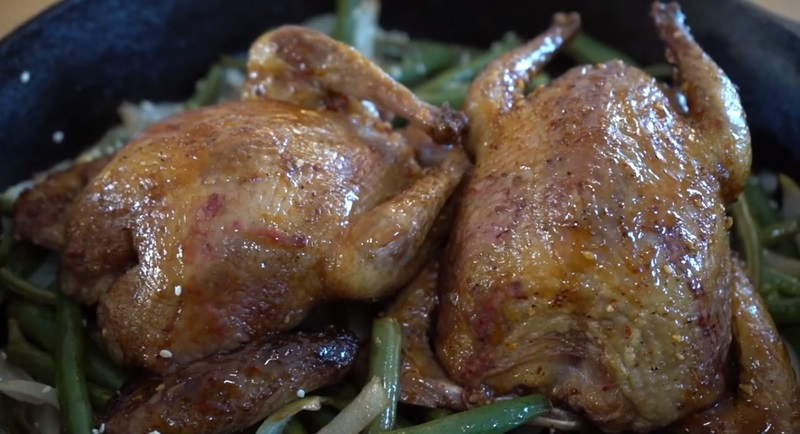
The Squab Dish is a traditional Chinese New Year delicacy that holds great significance during the festive season. Squab refers to young pigeons, and this dish symbolizes prosperity and abundance for the coming year. Prepared with meticulous care, the Squab Dish is a culinary masterpiece. The pigeons are marinated in a blend of soy sauce, ginger, garlic, and various spices to enhance their flavor. The meat is then roasted to perfection, resulting in tender and succulent pieces. The dish is not only visually appealing but also represents good luck. The golden-brown color of the roasted squab is believed to bring wealth and good fortune. The crispy skin adds a delightful texture, while the rich flavors of the marinade infuse the meat, creating a harmonious taste experience. Served alongside other traditional Chinese New Year dishes, such as dumplings and longevity noodles, the Squab Dish is a centerpiece on the festive table. It is enjoyed by families and friends as they come together to celebrate the start of a prosperous year, sharing laughter and joy. As part of Chinese New Year traditions, the Squab Dish is a dish that embodies the hopes and wishes for a prosperous and auspicious year ahead.
Tangyuan (food)
-1702976380.jpg)
Tangyuan is a traditional Chinese dessert dish that is commonly served during the Chinese New Year celebration. Made from glutinous rice flour mixed with water, the dough is then shaped into small balls and filled with various sweet fillings such as sesame paste, red bean paste, or peanut butter. The balls are then boiled in water until they float to the surface, indicating they are cooked and ready to be served. Tangyuan is not only delicious but also carries symbolic meaning. Its round shape represents reunion and harmony, which are highly valued during the Chinese New Year festivities. It is believed that eating tangyuan during this period brings good luck and a prosperous year ahead. The dish is often served in a sweet syrup made from rock sugar and water, which adds a delightful sweetness to the tangyuan. Some variations also include adding ginger slices to the syrup, which gives it a slightly spicy and warming flavor. Tangyuan is not only a tasty treat but also a symbol of luck and togetherness, making it an essential part of Chinese New Year celebrations.
Shark Fin Soup
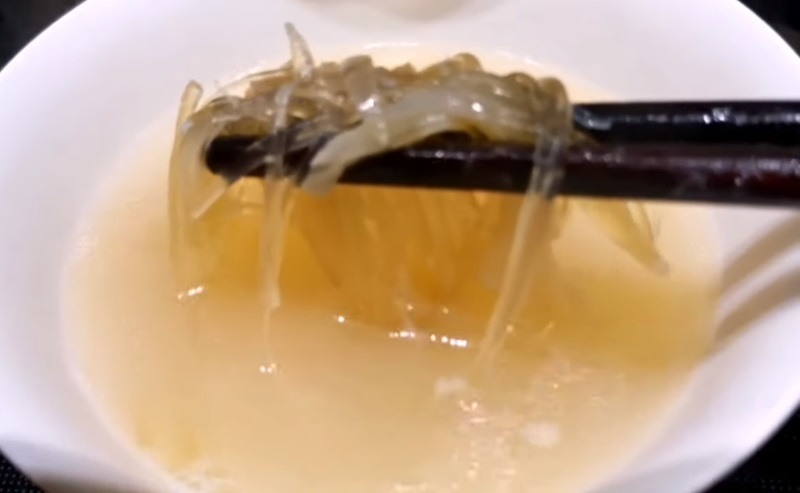
Shark fin soup is a traditional and highly sought-after dish often served during Chinese New Year celebrations. It is a delicacy that holds significant cultural and symbolic meaning in Chinese cuisine. The dish is made by simmering shark fins in a rich and flavorful broth, typically made from chicken or pork stock. The fins are soaked and carefully prepared to achieve a gelatinous texture, which adds a unique and luxurious element to the soup. Shark fin soup is considered a symbol of wealth, prosperity, and good fortune, making it an integral part of Chinese New Year feasts. Its consumption during this festive occasion is believed to bring luck and blessings for the year ahead. The dish is often served as a lavish centerpiece, showcasing the host's generosity and hospitality. However, it is important to note that shark fin soup has faced criticism and controversy due to the harmful impact of shark finning on the environment and shark populations. As a result, many people now choose to opt for sustainable alternatives or eliminate shark fin soup from their menus altogether, promoting the preservation of marine ecosystems.
Buddha's Delight
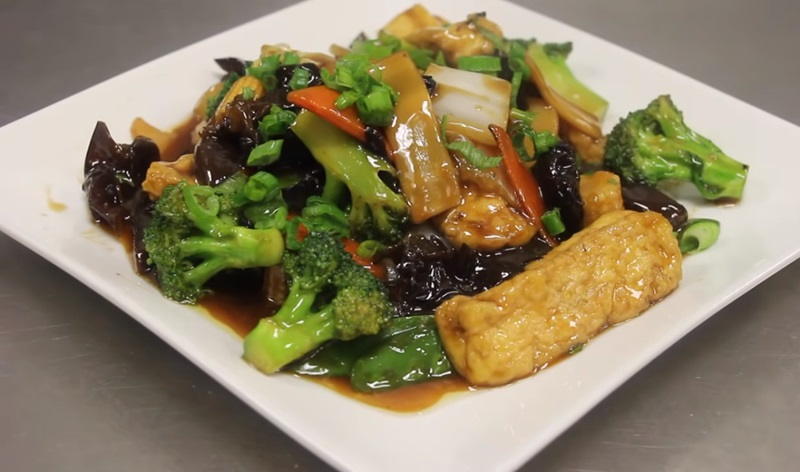
Buddha's Delight, also known as Jai or Lo Han Jai, is a traditional vegetarian dish commonly served during Chinese New Year. It holds great significance as it is believed to bring good luck and cleanse the body. This delectable dish is a medley of various ingredients, each symbolizing different auspicious meanings. It typically consists of a combination of vegetables such as mushrooms, bamboo shoots, lotus root, snow peas, and carrots, along with tofu or gluten-based protein substitutes. These ingredients are carefully selected for their symbolic value, representing longevity, wealth, happiness, and prosperity. The dish is cooked using a variety of seasonings, including soy sauce, oyster sauce, and sesame oil, which add depth and richness to the flavors. It is often garnished with ingredients like gingko nuts, black moss, and bean curd skin, which further enhance the dish's auspicious connotations. Buddha's Delight is not only a delicious vegetarian dish but also a representation of good fortune and well-being. It is enjoyed by families during Chinese New Year, offering a harmonious and healthy start to the festivities.
Nian Gao
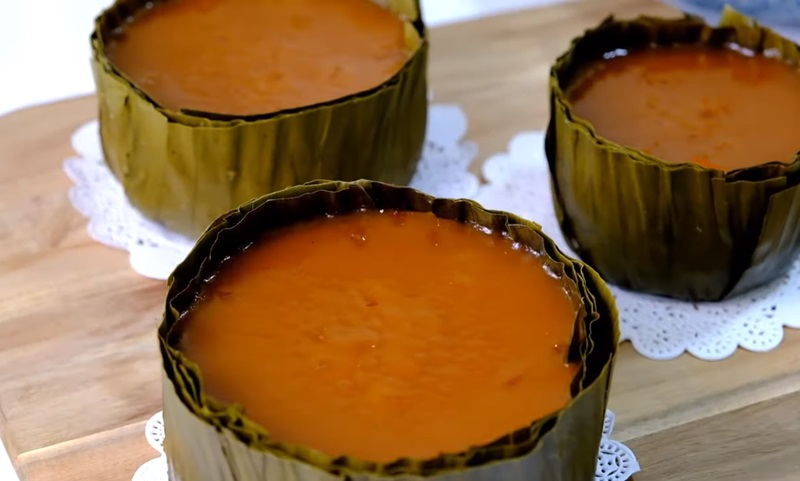
Nian Gao, also known as Chinese New Year cake or sticky rice cake, is a traditional dish enjoyed during the Chinese New Year festivities. This sweet and sticky cake holds great significance and is believed to bring good luck and prosperity for the coming year. Nian gao is made from glutinous rice flour, which gives it its distinctive chewy texture. It is usually steamed or pan-fried, resulting in a golden, crispy exterior and a soft, gooey center. The cake is often cut into slices and served as a dessert or snack. The name "nian gao" is a homophone for "higher year" in Chinese, symbolizing progress and advancement. It is a popular gift exchanged among friends and family during the New Year celebrations. Different regions in China have their own variations of nian gao, with some adding ingredients like red bean paste, dates, or nuts to enhance the flavor. Each bite of this delectable treat is a delightful blend of sweetness and chewiness, making it a must-have dish during Chinese New Year.
Yusheng
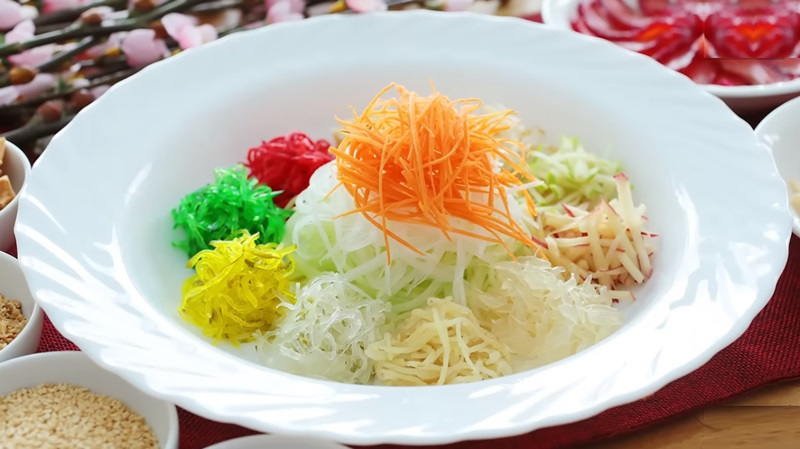
Yusheng, also known as the Prosperity Toss or Lo Hei, is a traditional and symbolic dish enjoyed during Chinese New Year. It is a colorful and vibrant salad that represents good luck, prosperity, and abundance. The dish typically consists of various ingredients such as raw fish (usually salmon), shredded vegetables, pickled ginger, crushed peanuts, sesame seeds, and crispy crackers. The preparation of Yusheng involves a communal activity where family and friends gather around a large platter. Each ingredient is added one by one while auspicious phrases are recited, adding to the festive atmosphere. Then, everyone uses their chopsticks to toss the ingredients high into the air, symbolizing the wish for a prosperous and successful year ahead. The tossing action is believed to bring good luck and increase the abundance in one's life. As the ingredients mix and mingle, the dish is said to enhance relationships and foster a sense of togetherness. Yusheng is not only a delicious and refreshing dish but also a representation of hope, joy, and unity during the Chinese New Year celebration.
Bakkwa
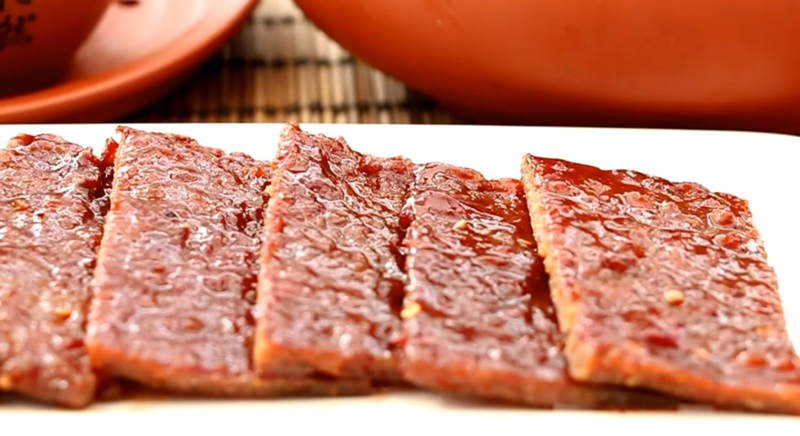
Bakkwa, also known as Chinese dried meat, is a popular dish often enjoyed during Chinese New Year celebrations. It is a type of sweet and savory jerky made from thinly sliced meat, typically pork, that is marinated with a mixture of sugar, soy sauce, spices, and other seasonings. The meat is then dried and grilled over a charcoal fire, giving it a smoky and slightly charred flavor. Bakkwa is known for its unique texture, which is both chewy and tender. It is often enjoyed as a snack or used as an ingredient in various dishes. During Chinese New Year, it is commonly exchanged as a gift between friends and family, symbolizing good luck and prosperity for the upcoming year. This delicious treat is not only enjoyed for its taste but also for its symbolic significance. The word "bakkwa" sounds similar to the Chinese word for "wealth," making it a popular choice during the festive season. Its reddish-brown color is also associated with good fortune and happiness. Whether eaten on its own or incorporated into other dishes, bakkwa is a beloved delicacy that adds a touch of indulgence to Chinese New Year celebrations.
Turnip Cake
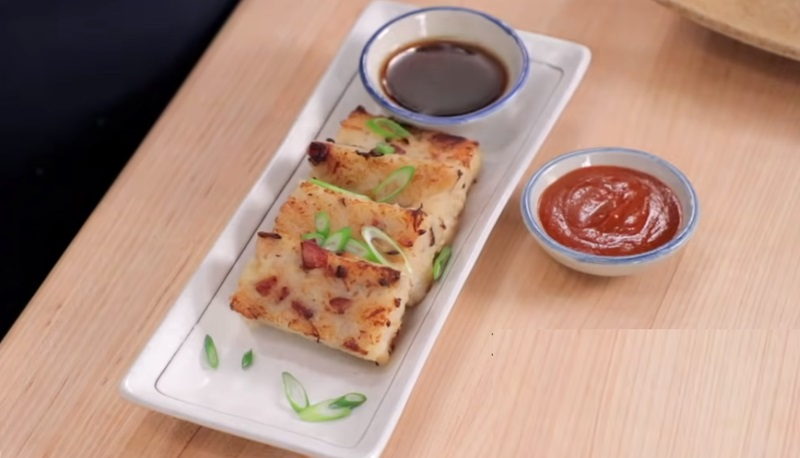
Turnip Cake, also known as "Lo Bak Go" in Chinese, is a traditional dish often enjoyed during Chinese New Year celebrations. This delectable delicacy has a unique blend of flavors and textures that make it a favorite among many. The dish is made using grated turnips, rice flour, Chinese sausage, dried shrimp, and various seasonings. The grated turnips provide a soft and slightly crunchy texture, while the rice flour acts as a binding agent to hold everything together. The Chinese sausage adds a savory and smoky flavor, while the dried shrimp adds a hint of umami. To prepare turnip cake, the ingredients are mixed together and then steamed until firm. Once cooked, the cake is typically sliced into rectangular pieces and pan-fried until golden and crispy on the outside. Turnip cake is often served as a savory appetizer or side dish during Chinese New Year festivities. Its rich flavors and satisfying texture make it a popular choice among both young and old. Whether enjoyed on its own or dipped into a tangy sauce, turnip cake is a must-try dish during this festive season.
Kuih
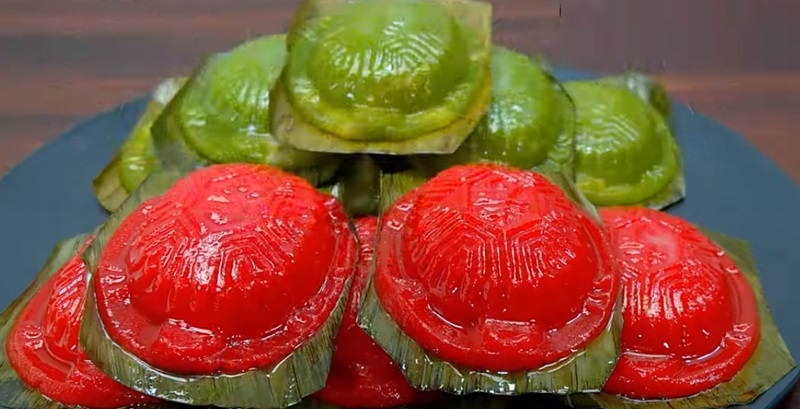
Chinese New Year is a time of celebration and feasting, and one traditional dish that is often enjoyed during this festive occasion is Kuih. Kuih is a type of traditional Chinese snack or dessert that comes in various shapes, colors, and flavors. It is typically made from rice flour, coconut milk, and sugar, and is often steamed or baked. One popular type of Kuih that is commonly prepared during Chinese New Year is Kuih Bakul, also known as Nian Gao. This sticky rice cake is made by steaming a mixture of glutinous rice flour, brown sugar, and water. It is then cut into slices and pan-fried until it becomes crispy on the outside and soft and chewy on the inside. Kuih Bakul is believed to bring good luck and prosperity for the coming year. Another type of Kuih that is enjoyed during Chinese New Year is Kuih Kapit, also known as Love Letters. These delicate and crispy egg rolls are made from a batter of coconut milk, eggs, and sugar, which is then cooked on a special iron mold. The cooked batter is then rolled into thin, crispy sheets that resemble love letters. Kuih is not only delicious but is also rich in symbolism. Its round shape represents unity and completeness, while its sweet taste signifies a sweet and prosperous year ahead. Whether it is Kuih Bakul or Kuih Kapit, these traditional Chinese New Year foods are a delightful addition to the festive celebrations.
Sticky Rice in Bamboo
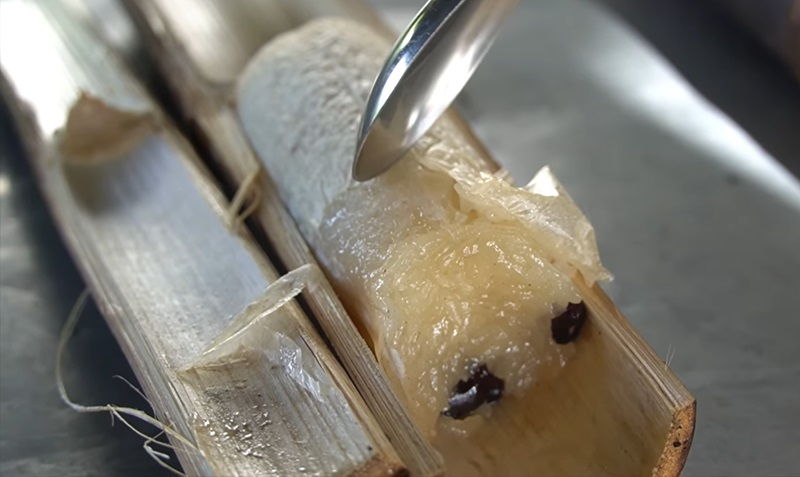
The sticky rice in bamboo dish, also known as zongzi, is a traditional Chinese New Year food that holds great significance. This delicious delicacy is made by wrapping glutinous rice with various fillings in bamboo leaves and steaming them to perfection. The sticky rice itself is the star of this dish. It is cooked until tender and sticky, giving it a unique texture and flavor. The fillings can vary, but commonly include ingredients such as pork belly, Chinese sausage, chestnuts, and mushrooms. These ingredients add a rich and savory taste to the rice, making it a satisfying treat. Preparing zongzi is a labor of love, as it requires intricate folding and tying of bamboo leaves to create the perfect package. The steaming process ensures that the flavors meld together harmoniously. During Chinese New Year, families gather to enjoy this symbolic dish. It is believed that eating sticky rice in bamboo dish brings good luck and wards off evil spirits. It is also seen as a way to honor ancestors and show gratitude for a bountiful harvest. In conclusion, the sticky rice in bamboo dish is a cherished Chinese New Year food that not only delights the taste buds but also carries deep cultural significance.
Spring Pancake
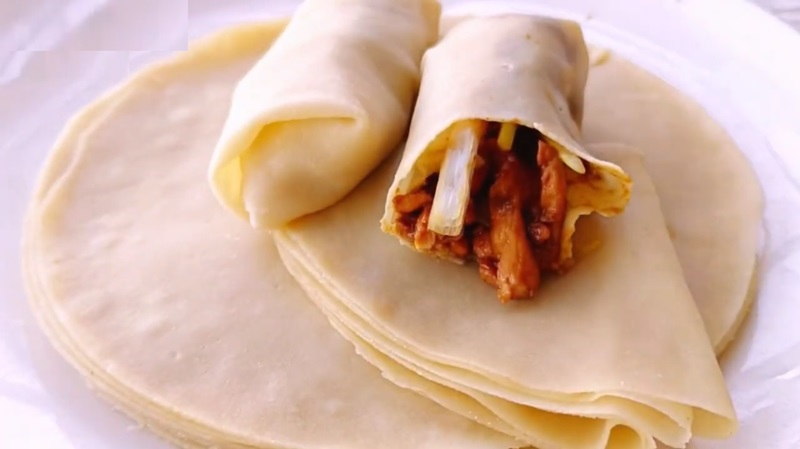
The Spring Pancake is a traditional Chinese dish that holds significant cultural and culinary importance during the Chinese New Year celebrations. This delightful dish consists of a thin, round pancake made from wheat flour, filled with an array of savory ingredients. The pancake is typically served with various fillings, such as thinly sliced vegetables, cooked meats like pork or chicken, and condiments like hoisin sauce or sweet bean paste. The preparation of Spring Pancakes often involves a communal effort, with family members and friends coming together to assemble and enjoy the dish. Each person takes a pancake, adds their desired fillings, and rolls it up before taking a satisfying bite. This process symbolizes unity, togetherness, and the sharing of blessings for the coming year. The Spring Pancake holds cultural significance, as its round shape represents unity and completeness.
Fa Gao
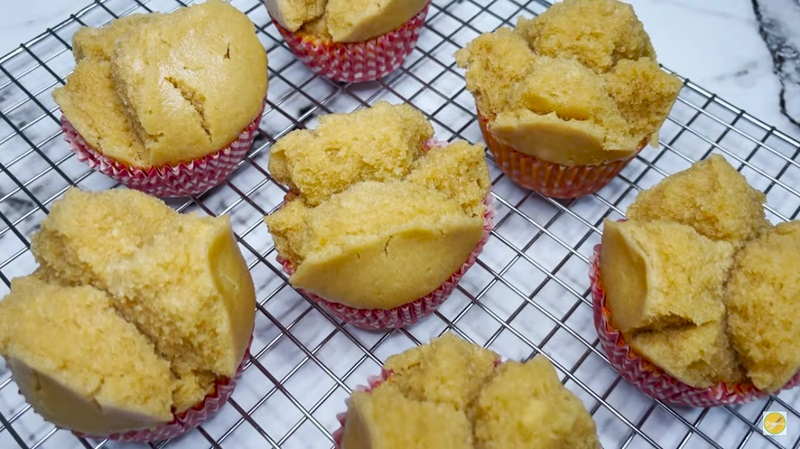
Fa Gao, also known as "prosperity cake," is a traditional Chinese New Year dish that holds great significance during this festive season. This delectable treat is a steamed cupcake-like dessert that is enjoyed by many families to bring good luck and fortune for the coming year. Fa gao gets its name from the Chinese word "fa," which means prosperity or wealth. The cake is made using a combination of fermented rice flour, sugar, and water, which results in a soft and spongy texture. The most distinctive feature of Fa gao is the colorful top, which is achieved by adding food coloring or natural ingredients like beetroot juice or pandan extract. The colors used in Fa gao are symbolic of different blessings. For example, red represents good luck, pink symbolizes romance, yellow signifies wealth, and green represents harmony. These vibrant colors make the dish visually appealing and add to the festive atmosphere. During Chinese New Year, Fa gao is often offered as a gift to friends and relatives. It is believed that consuming this dish will bring good fortune and prosperity throughout the year. Additionally, the act of steaming the cake is said to symbolize the rising of luck and success.
Taro Cake
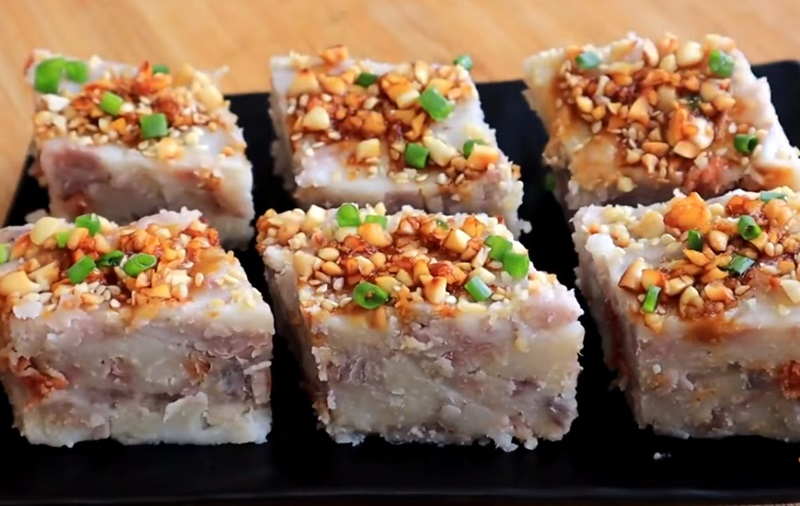
Taro Cake, also known as yam cake or wu tao gou, is a popular dish enjoyed during Chinese New Year celebrations. This traditional delicacy holds significant meaning in Chinese culture, symbolizing prosperity and good luck for the coming year. Taro cake is made by steaming a mixture of grated taro, rice flour, and water, combined with various savory ingredients such as Chinese sausage, dried shrimp, mushrooms, and scallions. The mixture is then poured into a square or round pan and steamed until firm. Once cooled, it is sliced into pieces and pan-fried until golden brown, giving it a crispy exterior and a soft, tender interior. The taro cake's unique texture and flavor make it a favorite among Chinese families during this festive time. The taro provides a subtle sweetness, while the other ingredients add a savory umami flavor. The dish is often served with soy sauce or chili sauce for dipping, enhancing its taste. During Chinese New Year, taro cake is believed to bring good fortune and prosperity to those who consume it. Families gather together to enjoy this auspicious dish, hoping for a year filled with abundance and success.
Yau Gok
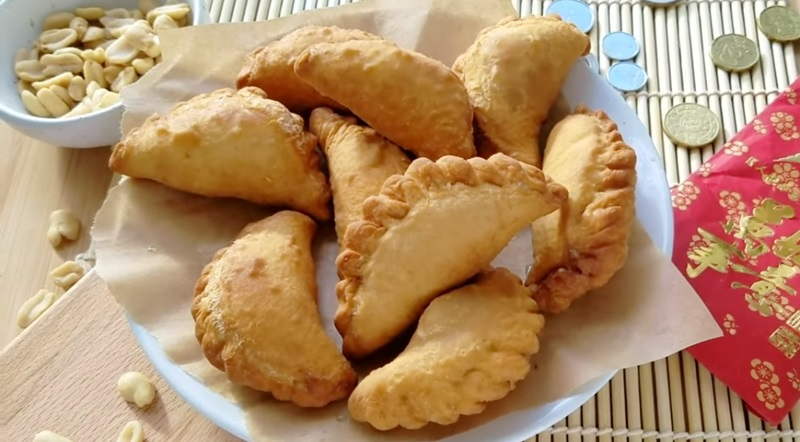
Yau Gok, also known as Chinese New Year's fried dumplings, is a popular dish enjoyed during the festive season. These delectable dumplings are a symbol of good luck and prosperity in Chinese culture. Yau gok is made by wrapping a filling of diced vegetables, meat, and sometimes shrimp in a thin, crispy pastry shell. The filling of yau gok usually consists of a combination of ingredients such as Chinese cabbage, carrots, mushrooms, water chestnuts, and minced pork or chicken. The mixture is seasoned with soy sauce, oyster sauce, and other aromatic spices to enhance its flavors. Once the filling is prepared, it is carefully wrapped in a thin dough and then deep-fried to perfection. The final result is a golden-brown dumpling with a crispy, flaky exterior and a savory, flavorful filling. Yau gok is not only delicious but also holds cultural significance during Chinese New Year celebrations. Yau gok is often served as an appetizer or snack during Chinese New Year gatherings, and it is believed that eating these dumplings will bring good luck and fortune for the year ahead.
Chinese Walnut Cookie
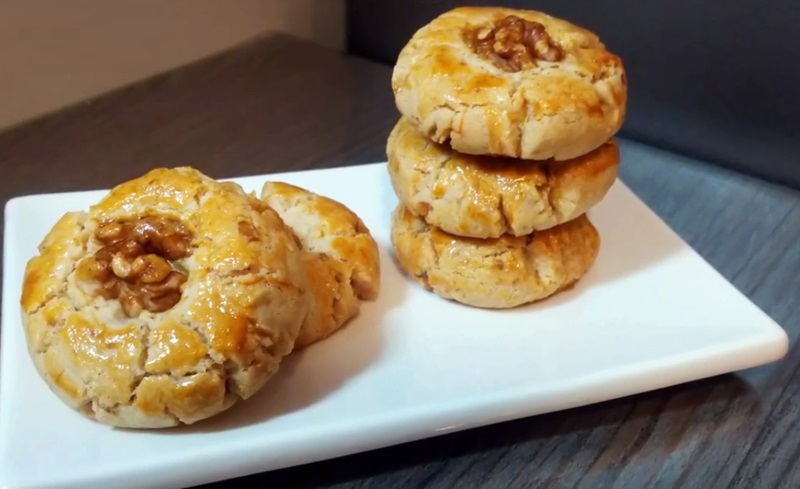
Chinese walnut cookies, also known as Hup Toh Soh, are a traditional delicacy enjoyed during the festive occasion of Chinese New Year. These cookies are a symbol of prosperity and good fortune, making them an essential part of the celebratory feast. The Chinese walnut cookie is a small, round pastry with a crumbly texture and a rich, nutty flavor. It is made primarily from flour, sugar, and crushed walnuts, which give it a distinct taste and a delightful crunch. The dough is shaped into small balls and then pressed with a walnut on top, creating a beautiful and eye-catching design. These cookies are often enjoyed with a cup of tea or as a sweet treat after a festive meal. They are believed to bring luck and blessings to those who consume them, making them a favorite among families and friends during Chinese New Year. In addition to being a delicious treat, Chinese walnut cookies also hold cultural significance. The round shape symbolizes completeness and unity, while the walnuts represent the wish for a prosperous year ahead. By indulging in these delectable cookies, people hope to attract good luck and fortune for the coming year.
Suguo
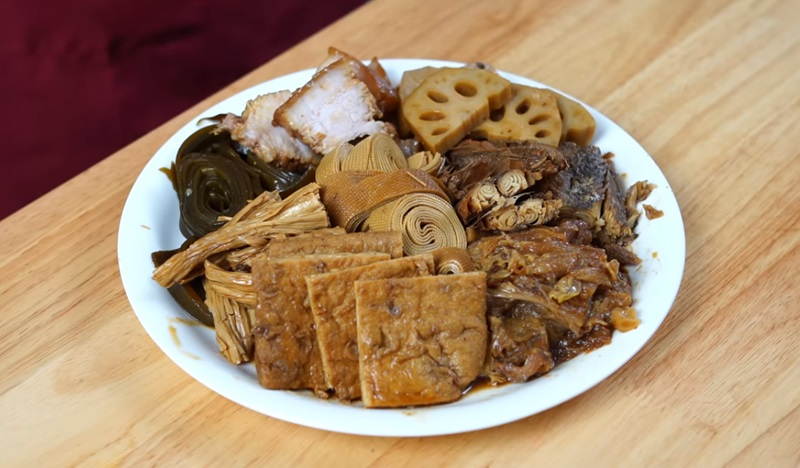
Suguo is a traditional dish made on Chinese New Year. It is made of around ten ingredients including elbow bone, pork belly, chicken, fish, lotus root, kelp, tofu, and Chinese cabbage. All the ingredients are slow-cooked in a vinegar in a pot
and it takes about 10 hours to make this dish fully ready.




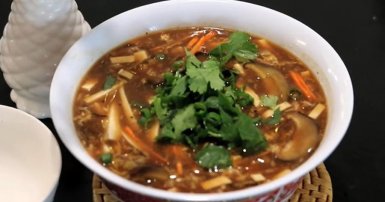
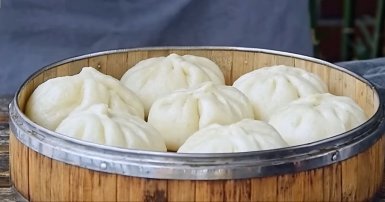
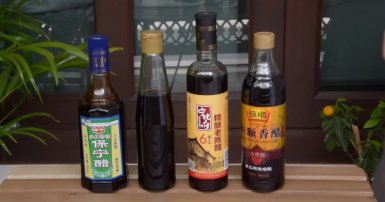
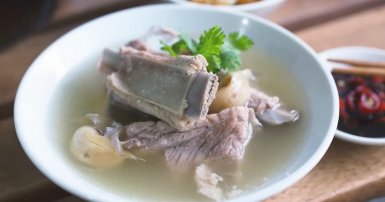
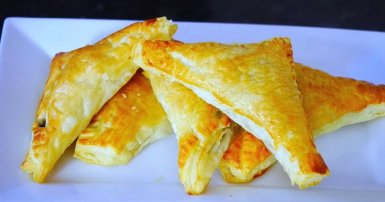

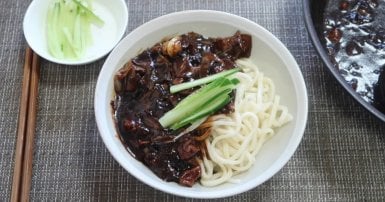
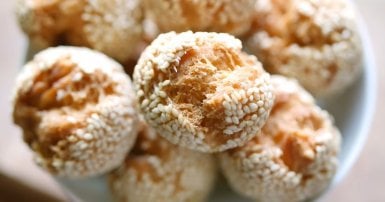

-1709813013.jpg)


